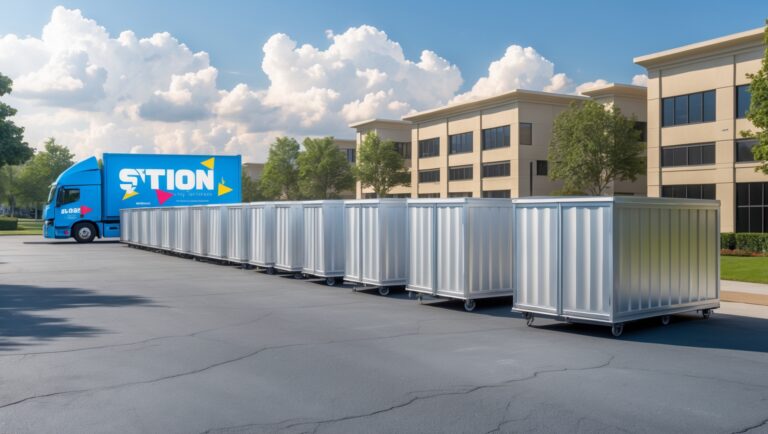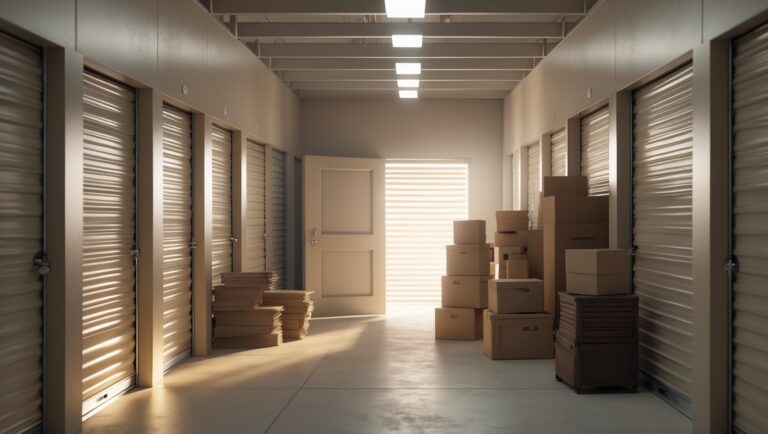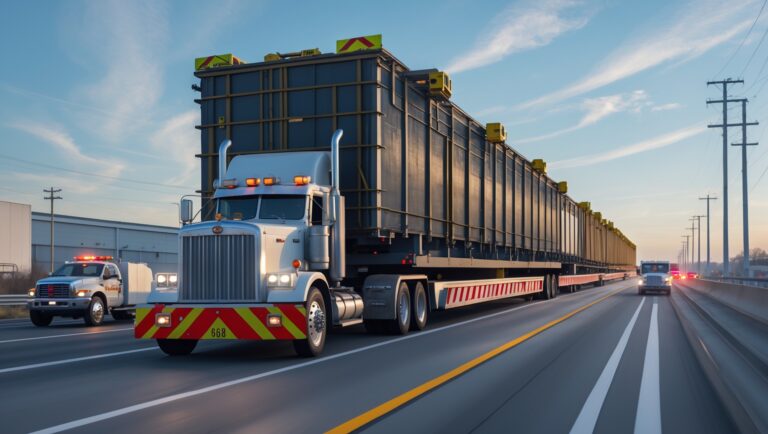Avoiding Costly Mistakes: A Beginner’s Guide to Moving Insurance Essentials
Introduction: Why Moving Insurance Is Non-Negotiable
Every year, thousands of residential and commercial moves take place across the country. While most people focus on packing, hiring movers, and logistics, a critical aspect often gets overlooked: insurance. Whether you’re a first-time mover or a small business owner starting a moving and storage company, understanding moving insurance is essential for protecting your belongings and your bottom line. In this comprehensive guide, we’ll demystify the types of insurance available, break down what’s covered (and what isn’t), spotlight beginner mistakes, and provide actionable steps for ensuring you’re properly protected. With moving mishaps ranging from accidental drops to weather events and even theft, the right insurance transforms uncertainty into peace of mind. Don’t risk financial loss or emotional stress—read on to learn how you can safeguard your move like a pro.
Understanding Moving Insurance: What Is It, and Why Does It Matter?
What Is Moving Insurance?
Moving insurance is a category of coverage designed to protect your possessions during transit, whether you’re relocating locally or across state lines. Unlike standard homeowner’s or renter’s insurance, moving insurance specifically addresses risks associated with loading, transporting, and unloading belongings.
Why Regular Home Insurance Usually Isn’t Enough
Most standard home insurance policies exclude or limit coverage for items in transit or handled by third-party movers. Without dedicated moving insurance, you could be liable for the full replacement cost of damaged or lost items. Additionally, many moving companies offer only minimal default protection, which may not reflect the true value of your possessions.
Who Needs Moving Insurance?
- Homeowners and Renters: Anyone relocating valuables, electronics, or sentimental items.
- Small Businesses: Companies moving equipment, inventory, or office furnishings.
- Storage Customers: Individuals using storage facilities during the move.
Types of Moving Insurance and Coverage Options
Released Value Protection
This is the most basic level of coverage and is typically included in your moving contract at no extra cost. However, it only provides minimal protection—usually compensating you based on item weight rather than actual value (e.g., $0.60 per pound per item in the U.S.). If your 20-pound TV is damaged, you’d receive just $12, regardless of its market price.
Full Value Protection
Full value protection is a more comprehensive option offered by most reputable moving companies for an additional fee. Under this plan, the mover is liable for the full replacement value of lost or damaged items. This may include:
- Repairing the item
- Replacing it with a similar item
- Providing a cash settlement
However, this plan may exclude certain valuables or place limits on specific high-value items unless you declare them in advance.
Third-Party Moving Insurance
For extra peace of mind, you can purchase moving insurance from a third-party provider. These policies can offer broader coverage, including protection against:
- Natural disasters (fire, flood, storms)
- Theft during transit or storage
- Mechanical or electrical derangement (for electronics and appliances)
- Mold, mildew, and other risks often excluded by movers
Insurance for Self-Moves
If you’re renting a moving truck or van and handling the move yourself, check whether your auto insurance or credit card covers rental vehicles and cargo. In most cases, you’ll need to buy supplemental insurance for both the vehicle and your possessions.
Common Beginner Mistakes to Avoid
1. Assuming All Insurance Is the Same
Many first-time movers believe that any “insurance” from a moving company provides complete protection. In reality, released value protection is often insufficient, and full value protection has its own exclusions. Always read the fine print and understand what’s covered.
2. Overlooking the Inventory Requirement
Most insurance claims require a detailed inventory of your belongings, including item descriptions, approximate values, and photos. Skipping this step makes it difficult to prove loss or damage—and can delay or invalidate your claim.
3. Failing to Declare High-Value Items
Items like jewelry, antiques, and collectibles often require special declaration. If these aren’t listed in your moving contract or insurance policy, you may not be compensated at full value in case of loss.
4. Not Noting Pre-Existing Damage
Before packing, inspect your possessions and note any scratches, dents, or issues. This documentation is essential should you need to prove new damage occurred during the move.
5. Ignoring Policy Exclusions
Common exclusions include cash, documents, plants, and certain hazardous materials. Some policies won’t cover items packed by the owner (“PBO”) or boxes with inadequate packing. Always clarify these points before moving day.
6. Waiting Too Long to File a Claim
Insurance claims must usually be filed within a set timeframe (often 9 months in the U.S.). Delaying your claim can result in denial. Inspect your delivery as soon as possible and report any issues immediately.
Step-by-Step: Securing the Right Moving Insurance
1. Start with a Detailed Inventory
- List every item you plan to move, including descriptions and estimated values.
- Photograph expensive or fragile items from multiple angles.
- Record serial numbers for electronics and appliances.
2. Assess Your Risks and Needs
- Are you moving items of high monetary or sentimental value?
- Will your belongings be stored for any period?
- Are you relocating to a region prone to extreme weather?
Your answers will help determine the level and type of coverage you need.
3. Compare Coverage Options
- Request written details of released value and full value protection from your moving company.
- Ask about deductibles, coverage limits, and exclusions.
- Obtain quotes from third-party insurance providers for supplemental coverage.
4. Read the Fine Print
Never assume verbal promises are binding. Insist on reviewing the actual policy or contract. Pay attention to:
- Covered perils (fire, theft, breakage, etc.)
- Exclusions (items not covered, acts of God, etc.)
- Claim process and deadlines
- Required documentation
5. Declare High-Value Items
List any items with a value above the mover’s stated threshold (often $100–$500 per item). Provide purchase receipts or appraisals if possible. Make sure these items are specifically insured under your policy.
6. Document Packing and Condition
- If you pack your own boxes, use proper materials and techniques to avoid claim denials for “inadequate packing.”
- Take photos of the contents before sealing boxes.
- Retain all receipts for packing materials and services.
7. Confirm Coverage for Storage Periods
If your goods will be stored in a facility before or after transit, check whether your chosen insurance covers storage (and for how long). Some policies provide only limited/no coverage for storage beyond a certain period.
Case Study: How Overlooking Insurance Cost One Family Thousands
Consider the real-world example of the Harris family. During their cross-country relocation, they opted for the default released value protection offered by their movers. Unfortunately, a moving truck accident resulted in the loss of several valuable electronics and heirloom antiques. While the items’ actual value exceeded $8,000, the family received just $175 in compensation—nowhere near the cost to replace what was lost. Had they purchased full value protection or a third-party policy, their financial (and emotional) loss could have been minimized. The Harris family’s experience underscores the importance of understanding and investing in the right moving insurance.
Frequently Asked Questions About Moving Insurance
Is moving insurance legally required?
No, but all interstate movers in the U.S. must offer released value protection at minimum. Full value protection and third-party policies are optional but highly recommended for valuable moves.
Can I buy insurance after my move has started?
Usually not. Most providers require insurance to be in place before loading begins. Plan ahead to avoid gaps in coverage.
Does renter’s or homeowner’s insurance cover moving losses?
Only in rare cases, and usually with significant limitations. Always check with your insurer, but don’t rely solely on existing policies for moves.
What if I’m moving internationally?
International moves require specialized insurance, often offered by international moving companies or third-party insurers. Coverage options and requirements differ by country and mode of transport (air, sea, road).
Checklist: Protecting Your Move with Insurance
- Inventory all belongings with descriptions, photos, and estimated values.
- Decide which insurance option(s) fit your needs and budget.
- Document pre-existing damage and packing methods.
- Declare and insure high-value items separately.
- Read all policy documents carefully—note exclusions and claim procedures.
- Confirm storage coverage if relevant.
- File any claims promptly and keep all supporting documentation.
Conclusion: Don’t Let Insurance Oversights Derail Your Move
Moving is a significant life event, and the risks to your possessions should not be underestimated. Many people, especially first-timers, assume basic insurance is enough or don’t realize the limitations of their coverage until it’s too late. The consequences can be financially and emotionally devastating—especially if you lose irreplaceable items or face unexpected repair or replacement costs. By understanding the different types of moving insurance, knowing what is (and isn’t) covered, and proactively documenting your belongings and their value, you put yourself in the best position to recover from whatever the journey throws your way. For business owners in the moving and storage industry, offering clear guidance and robust options to your customers also builds trust and sets your service apart. Remember: insurance is not an unnecessary expense—it’s a smart investment in peace of mind. Take the time to review your options, ask questions, and secure the coverage that fits your unique move. Your future self will thank you.






